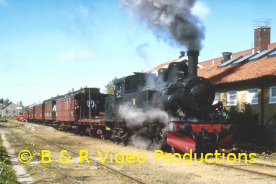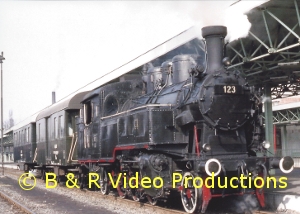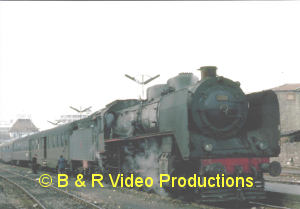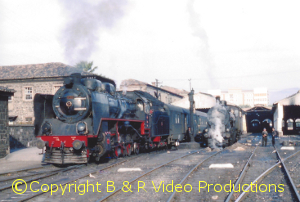-
Latest Releases
Catalog
 Volumes 239 and above
Volumes 239 and above
 Volumes 230-238
Volumes 230-238
 Volumes 222 to 229
Volumes 222 to 229
 Volumes 214 to 221
Volumes 214 to 221
 Volumes 207-213
Volumes 207-213
 Volumes 200-206
Volumes 200-206
 Volumes 190-199
Volumes 190-199
 Volumes 180-189
Volumes 180-189
 Volumes 174-179
Volumes 174-179
 Volumes 167-173
Volumes 167-173
 Volumes 158-166
Volumes 158-166
 Volumes 150-157
Volumes 150-157
 Volumes 142-149
Volumes 142-149
 Volumes 134-141
Volumes 134-141
 Volumes 127-133
Volumes 127-133
 Volumes 117-126
Volumes 117-126
 Volumes 108-116
Volumes 108-116
 Volumes 101-107
Volumes 101-107
 Volumes 90-100
Volumes 90-100
 Volumes 80-89
Volumes 80-89
 Volumes 70-79
Volumes 70-79
 Volumes 60-69
Volumes 60-69
 Volumes 50-59
Volumes 50-59
 Volumes 40-49
Volumes 40-49
 Volumes 30-39
Volumes 30-39
 Volumes 20-29
Volumes 20-29
 Volumes 7-19
Volumes 7-19
 Uncategorized
Uncategorized
 The Wilderness Years – Steam Still At Work after August 1968
The Wilderness Years – Steam Still At Work after August 1968
 The Chris Noyle Collection
The Chris Noyle Collection
 The Brian Parnell Collection
The Brian Parnell Collection
 Steam Routes Series
Steam Routes Series
 Steam in Wales & The Borders
Steam in Wales & The Borders
 Southern Steam Miscellany Series
Southern Steam Miscellany Series
 Southern Steam Finale
Southern Steam Finale
 Scottish Railways Collection
Scottish Railways Collection
 Overseas
Overseas
 Miscellany Series (post Vol.190)
Miscellany Series (post Vol.190)
 London Midland Steam Miscellany Series
London Midland Steam Miscellany Series
 Lancashire & Yorkshire Memories
Lancashire & Yorkshire Memories
 The Jim Clemens Collection
The Jim Clemens Collection
 Industrial Railways
Industrial Railways
 Great Western Steam Miscellany Series
Great Western Steam Miscellany Series
 Great Western
Great Western
 Diesels & Electrics (heritage)
Diesels & Electrics (heritage)
 Diesel & Electric Miscellany Series
Diesel & Electric Miscellany Series
 Along Southern Lines
Along Southern Lines
 Along LNER Lines
Along LNER Lines
 Along LMS Lines
Along LMS Lines
 Along GWR Lines
Along GWR Lines
Meta
Volume 229
| Scandinavian Railway Memories (67-mins) | Price £19.75 |
As well as satisfying their passion for steam in the British Isles, enthusiasts sought it out in other ways, with many making their way into Europe in search of steam.
In the summer of 1962, the late Brian Lockey visited Sweden and Finland on the Railway Correspondence & Travel Society (RCTS) rail tour of Scandinavia. Then in the autumn of 1970 Brian visited Denmark, this time with the Railway Enthusiasts Club (REC). Brian’s films make up the majority of this volume of Scandinavian Railway Memories.
The Swedish visit includes wooden-bodied jackshaft electric D Class 1C1 locomotives, a giant 0-10-0 originally from the Kiruna far north iron ore line, the Tomteboda Railway Museum plus Sweden’s largest railway exhibition of 1962. Visits are also made to Falun, Hagalund shed, Ludvika, and Kristianstad shed. Sweden’s largest private railway is seen at Eskilstuna, the TJOJ iron-ore line, where the Traffic Manager and Chief Engineer took the party around. The last steamship built in Scandinavia (and now-preserved SS “Bore”) takes the tour from Stockholm onwards to Turku.
There is excellent coverage of Finnish steam, but starts with an Hr12 (now Dr12) Co-Co diesel. Helsinki shed was visited and on the adjacent main line, there is continuous steam activity coming up the hill out of the City. Steam abounds including 0-6-0T, 0-6-2T, 4-6-0, 4-6-2, 2-8-0, 2-8-2, 2-8-2T, 0-10-0T and 2-10-0 classes. The Tr1 2-8-2s and Hr1 4-6-2s built up to 1957 are real beauties and include bar frames plus interchangeable boilers. Wood-burners are also seen, complete with spark-arresting chimneys.
The visit to Denmark includes one of the ‘P’ class Atlantics, single and double chimney ‘E’ class Pacifics, a visit to Fredericia shed, a trip on the World’s oldest steam paddle steamer, and haulage of standard-gauge stock by a narrow-gauge locomotive. Modem traction includes ‘Lyntog’ inter-city units and East German 175s on the Berlin service.
Trams and trolleybuses are not forgotten. Some Scandinavian steam locomotives found a later home in the UK and visits are made to see them, including filming for the James Bond film ‘Octopussy’. Finally there are some ‘Railway Roundabout” type 16mm offcuts and unused film of Finnish steam purchased from Pat Whitehouse by Jim Clemens.
Cover Photo:- SJ 2-6-4T No.1393 (built 1918) at Vitaby, Sweden.
.
Click here to order this volume and other videos online
(By clicking here you are entering Wolverton Rail Videos web site with over 4000 transport videos & DVDs available
‘Run by Enthusiasts for Enthusiasts since 1987′.
Please note you will be buying from Wolverton Rail and not B & R Video Productions)… Read More
Released in Overseas, Volumes 222 to 229
Tagged 4F, 9F, archive, Britannia, Chinley, Crewe, England, Keith Pirt, Kingmoor, LMS, London, Manchester, Midland, Preston, Royal Scot, Shap, steam, Stockport, Tebay, WCML
Leave a comment
Volume 198
| Austrian Steam Spectacular (60-mins) | Price £19.75 |
Following the demise of steam on BR in 1968, enthusiasts sought out steam in other ways and many visited Austria where their passion could be combined with Alpine scenery. Even as late as 1972, there were still hundreds of steam locomotives in OBB (Austrian Federal Railways) stock.
Steam was concentrated in the east, including Vienna, Graz, and Linz. Numerically the largest were the German ‘Kreigslok’ (War Engine) Class 52 2-10-0s (the equivalent to the British WD classes) with their ‘Kabinetender’ (Cabin Tender) Other designs seen include the Class 50 (predecessor of Class 52) and the Class 152 (bar-framed Class 52).
We see steam on passenger services around Vienna with Class 77 4-6-2Ts, the big Class 78 4-6-4Ts, and the rugged Class 93 2-8-2Ts.
Unfamiliar to British rail fans were the lightweight 2-4-2Ts or ‘Dampftriebwagens’ (Steam Railcars) which included an integral guard’s and baggage compartment.
Austria was birthplace of the Giesel Ejector and 450 had been fitted to OBB classes by 1961. A highlight was the Erzberg rack railway. This spectacular line, seen in summer and winter, was home to massive 0-12-0 and 2-12-2 locomotives working ore trains.
The GKB system (Graz Koflacher Eisenbahn) included 2 cylinder compound 2-8-0s and a 103 years-old 0-6-0.
Austria had borders with Eastern Bloc countries and we see locomotives from Czechoslovakia, Yugoslavia and Hungary plus an inter-city DMU from East Germany.
It was refreshing to see some Austrian steam narrow-gauge systems working for a living and not just tourist lines. We visit the Steyr Valley Railway from Garsten with its 0-6-2Ts, and the lines around Gmund with 0-8-0 articulated-tender engines and transporter wagons.
There were also old and interesting electric locomotives including the Mariazellbahn Railway whose locomotives dated from 1911, and the impressive ‘Crocodiles’ with their long noses reminiscent of the snout of a crocodile.
Filmed entirely in colour over the ten years or so from 1963, a detailed commentary plus sound track complements this nostalgic look at the railways of Austria.
Cover photo:- Colin White
GySEV 2-6-2T No.123 2-6-2T on the 12:18 to Fertoboz at Sopron, 1970s.
Click here to order this volume and other videos online
(By clicking here you are entering Wolverton Rail Videos web site with over 4000 transport videos & DVDs available
‘Run by Enthusiasts for Enthusiasts since 1987′.
Please note you will be buying from Wolverton Rail and not B & R Video Productions)… Read More
Volume 192
| Turkish Delight Part 2 (75-mins) | Price £19.75 |
Turkey is a country with a landscape full of dramatic contrasts from the largely flat western side in Europe to the rugged, mountainous eastern side in Asia separated by the Bosphorus waterway. To cope with this challenging environment, the railways used simple but powerful steam locomotives and continued to do so until the late 1980s. Turkey was one of the last countries in the world to use steam traction and it became a mecca for steam enthusiasts.
In Part 1, we visited the Asiatic side around Izmir and the Black Sea coast around Zonguldak before moving east to the Euphrates Gorge and then south to Konya.
In this Part 2, we revisit the Zonguldak area and the Burdur system before returning to Izmir and then continue along the Konya and Afyon line. We visit several of the lines in the Afyon area before revisiting the Burdur system and return to Izmir from Denizli.
Although the named express trains were usually diesel hauled, most of the country was steam worked using a variety of steam engines of many different types. Here we see both main line and secondary line, passenger, freight and mixed trains hauled by a mixture of 2-10-2s, 2-10-0s, 0-10-0s, 2-8-2s, 2-8-0s and 0-8-0s passing through some dramatic scenery and weather.
There are double-headed and banked (even some double banked) trains. Prussian, German and USA built locomotives abound. We see some British Stanier 8F “Churchill” 2-8-0s working trains plus a brief glimpse of a steam crane on shunting duties!. In addition to the main and secondary lines footage there are some steam shed scenes. There is even footage of a rail-across-rail level crossing!
An absolutely fascinating record of the last years of steam traction in Turkey!
This all colour film has been brought to life with superb sound and commentary.
Cover photo:- Cover photo:- Colin White. 57009 arrives at Basmane from Kars and leaves on the 11am to Soma, 13/12/75.
Click here to order this volume and other videos online
(By clicking here you are entering Wolverton Rail Videos web site with over 4000 transport videos & DVDs available
‘Run by Enthusiasts for Enthusiasts since 1987′.
Please note you will be buying from Wolverton Rail and not B & R Video Productions)… Read More
Volume 186
| Turkish Delight Part 1 (90-mins) | Price £19.75 |
Turkey lies at the further eastern extremity of Europe with one seventh of its territory in Europe and the remainder in Asia, separated by the Bosphorous waterway. While the former is largely flat, the latter is mountainous with railways facing severe gradients climbing into the rugged interior from the coastal plains of the Mediterranean in the south and the Black Sea in the north.
The first railway was started in 1856 and construction continued until 1971 when the final section from Lake Van to the Iranian border was finished. But this still resulted in a sparse network of lines for such a large country.
Locomotives were of necessity, powerful and sturdy with mainly British, German and American builders. Passenger working were sparse with only one or two trains a day for most lines and often mixed traffic. Freight workings predominated with many trains double headed or with banking engines on the steeper line sections. Most lines were standard gauge with a few narrow gauge lines. Dieselisation was completed first in the West, gradually moving eastwards. Steam locomotive building ended in 1961. In the West most locomotives were coal fired due an abundance of coal mines; in the East most were oil-fired. However by the late 1980s all had been withdrawn.
Our first scenes concentrate on the western part of Asiatic Turkey with scenes from Izmir with its intensive suburban services and longer distance trains to the interior plus around the Black Sea port of Zonguldak with its extensive coal mines and associated workings.
Later scenes move further east via the Black Sea coast to Sivas and the Euphrates Gorge near Erzurum and returning south via Konya.
This all colour film has been brought to life with superb sound and commentary.
Cover Photo:- Cover photo: Colin White. 57018 on 9:35 to Denizli at Alsancak (44071 pilot) 13/12/75.
Click here to order this Volume 186 and other videos online
(By clicking here you are entering Wolverton Rail Videos web site with over 4000 transport videos & DVDs available
‘Run by Enthusiasts for Enthusiasts since 1987′.
Please note you will be buying from Wolverton Rail and not B & R Video Productions)… Read More
Released in Overseas, Volumes 180-189
Tagged British, coal, Europe, freight, narrow gauge, standard gauge, steam
Leave a comment



